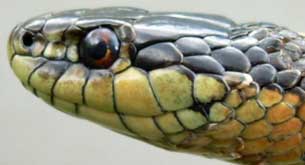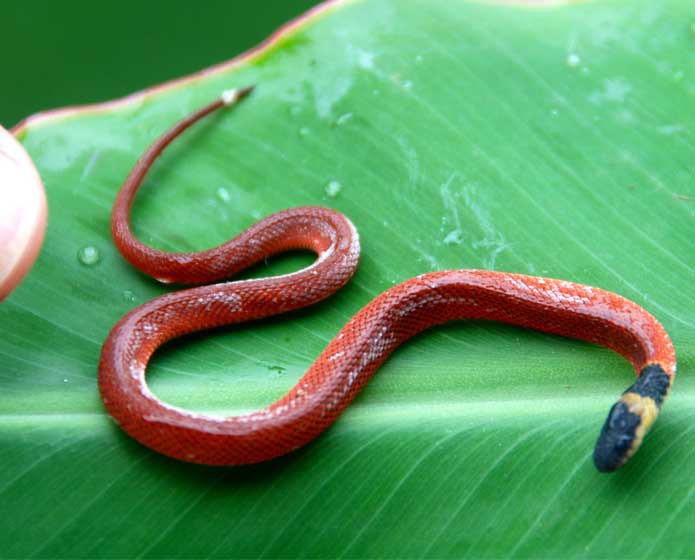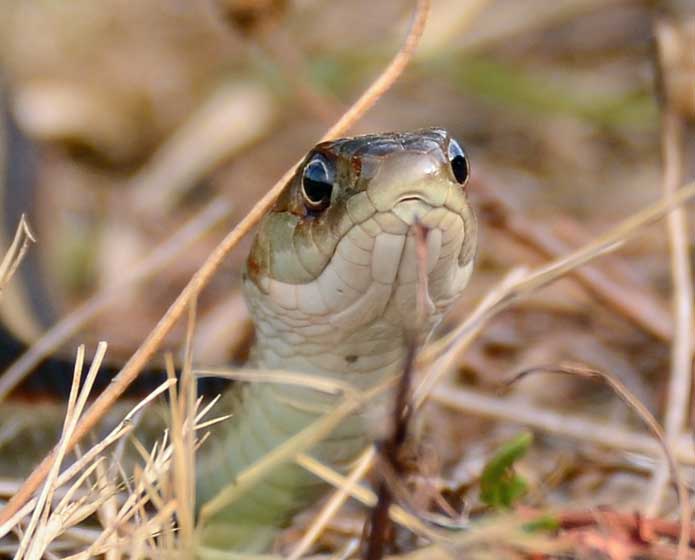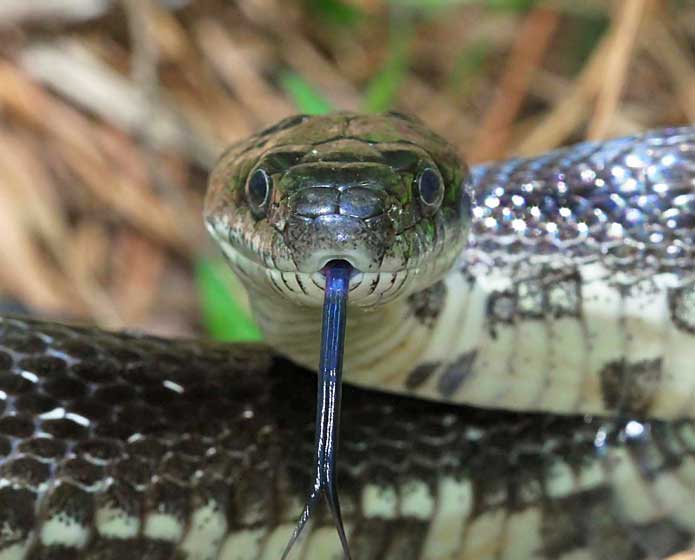Photo Credit: Flickr.com users; Snake 1 (amslerpix), Snake 2 (goingslo), Snake 3 (DrPhotoMoto)
Facts about Snakes
Posted by Admin / in Science Facts
Snakes are very plentiful throughout the world. Without snakes rats and other rodents would likely be more abundant. Some snakes are very dangerous since they can bite and inject venom that is poisonous to people. Other large snakes are also dangerous to people because they can surround and strangle someone with their powerful body. A majority of snakes, however, are harmless to people. They are more scared of us then we are of them. Find out many interesting facts about snakes.

Snakes have scales on their skin to help them grip the ground, trees and rocks
Photo Credit Flickr.com user benet2006
Interesting Facts About Snakes
- There are approximately 2700 species of snakes.
- Snakes are reptiles
- snakes are cold-blooded, meaning their body temperature changes. If a snake gets too cold it cannot move.
- Snakes are vertebrates like mammals. This means they have a backbone. Snakes backbones have many individual bones, between 150 to 420. People only have 24 backbones.
- Snakes have scales on their skin that help them hold onto the ground or trees and rocks.
- Snakes shed their skin.
- Snakes breath air through their lungs.
- Snakes like everywhere the ground is not frozen throughout the year. They even live where it snows.
- Snakes like on every continent, except Antarctica. Surprisingly, snakes also do not live on some islands. For example, there are no snakes in Ireland, Iceland or New Zealand.
- Snakes that live in a cold climate can hibernate during the winter. During this time they do not need to eat any food.
- Snakes can live almost everywhere in their environment. Snakes live on the ground, underground, in the mountains and trees and even in the water.
- Some snakes can glide through the air. Golden Tree Snakes, found in Thailand, flatten their bodies when they jump from trees to slow their fall.
- Almost all snakes can swim.
- Snakes use their tongue and mouth to track their prey.
- Snakes can stick out their tongue with their mouth completely closed.
- Most snakes are born from eggs. Some snakes like rattlesnakes and boa constrictors are born live.
- A snake's jaw is not like most animals. Their jaw is loosely attached to its skull allowing it to eat things larger than its head.
- Snakes eat any animal they can fit in their body, including other snakes and eggs.
- There are two types of poisonous snakes, including vipers and elapids.
- There are over 400 species of poisonous snakes.
- In Australia, there are more poisonous snakes and non-poisonous snakes.
- Snakes with venom use it for two reasons. First, the venom can slow down or kill their prey. Second, the venom contains enzymes that can help the snake digest their prey better.
- Only two drops of venom from a black mamba snake can kill a human in 10 minutes. Black mamba snakes are found in Southern and Eastern Africa and are known to kill lions.
- A king cobra has venom powerful enough to kill an elephant
- There are 30 species of rattlesnakes which have a scaly rattle on the tip of their tail.
- Constrictor snakes kill their prey by squeezing them.
- The giant anaconda snake is the largest snake. They grow to more than 30 feet long (9 meters).
- The smallest snake is the Brahminy blind snake at only 6 inches long.
- The fastest snake recorded on land is the racer snake at 7 mph (11 kph). Although never recorded, the black mamba snake is said to travel twice as fast as the racer snake.



